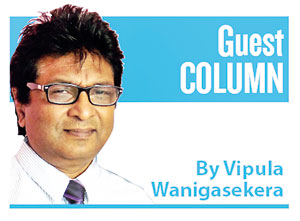Food for thought in destination marketing campaign
View(s): It is certainly good news that Sri Lanka Tourism is planning a destination campaign and this is a long felt need by the tourism industry since the conflict ended a long time ago. It is also commendable the efforts of the Promotion and Convention Bureau officials for the excellent work done under difficult conditions with ad hoc promotions to have Sri Lanka on the map.
It is certainly good news that Sri Lanka Tourism is planning a destination campaign and this is a long felt need by the tourism industry since the conflict ended a long time ago. It is also commendable the efforts of the Promotion and Convention Bureau officials for the excellent work done under difficult conditions with ad hoc promotions to have Sri Lanka on the map.
It is reported that the destination campaign would be preceded initially through digital platforms and thereafter will go through other communication channels. The markets have been identified: Western Europe, Middle East, China and India. Geographically the markets are adequately covered. The fear now is that unless a destination promotion takes place prior to the end of this year, Sri Lanka will gradually lose her glamour having enjoyed the fruits of peace and the outcome of whatever that was done in the primary and secondary markets for several years in the past.
While everyone is eagerly waiting for the forthcoming destination campaign, it is worthwhile understanding why previous attempts failed. If not, the present expectations too will hit a rock somewhere, leaving the bits and pieces to move on without having any analysis for their outcome.
There are a few vital factors that require attention. First, what are the plans for SriLankan Airlines in its restructuring process as it is necessary for direct connectivity for some source points such as Frankfurt and Paris and later to emerging markets viz Scandinavia, etc? Hopefully, with or without a strategic partner, SriLankan will recommence these two flights regularly. It is a pity that the value of tourism is not accounted for in the airline operation.
Second, are there research analyses available on traveller preference and behaviour? Prior to the 2009 campaign, Sri Lanka Tourism was fully equipped with information with regard to travel preferences and behaviour without which the messages that would be communicated to the markets would be a misfit. How does Sri Lanka Tourism intend developing communication messages without identifying the market profiles?
Availability of such analysis will reduce the number of meetings and discussions to decide on actions needed from time to time. The industry was blamed in the past for having self interest in the decision-making process. Whether the statement is true or not, it is unnecessary when a country is fully geared with knowledge as to what is happening in source markets and travel behaviours.
Thirdly, the weightage given to promotions targeted to the trade and consumers in the chosen markets. For instance the Indian corporate market needs more push from the outbound and incentive houses in India to get their clients across to Sri Lanka for business meetings and incentives whereas consumer pull would be ideal in Germany when deciding their next destination.
Fourth, the Promotion Bureau should prudently use social media as reported, having understood that advertorials may not bring in desired results. However, our competitors know this too. They are also relying heavily on social media and specially the ‘earned media’. The extent to which Sri Lanka Tourism can stand out in creativity when reaching out to the target audience, will determine the success of the campaign. Outside expertise is needed for this purpose.
Fifth, Sri Lanka Tourism authorities are yet to arrive at a decision on the position of media buying should advertising on main media become important to go with a bang!! This confusion has dragged and stalled previous campaigns, not necessarily tourism.
The lion’s share of the budget is generally eaten by the media slots and leaving it as a separate exercise for one, may not be advisable if the development of strategy has to be done by another who has to sacrifice power over media. What is lacking is a strong evaluation process with a tailor-made marking system that cannot be challenged.
Sixth, the promises given through communication messages must be delivered. The other day the writer saw on FB how a guide was abusing a couple of tourists over price negotiations. We have no system to apprehend them even with clear evidence in hand.
These may not happen in group tours thanks to our experienced tourism industry. However, if Sri Lanka is targeting the FITs (Free Independent Travellers) who are more explorers and stay longer with most of them being travel bloggers themselves, there should be a system to apprehend offenders.
The standards must come in following the initial period of allowing the ‘small man’ to earn. That era should have come to an end after the industry was resurrected to where it is today. The unplanned development without yardsticks to measure will lead to adverse repercussions which will prevent authorities from raising the profile of the country.
Seventh, the campaign should not be directed to increase the numbers. Sri Lanka needs value. We need tourists who could appreciate what Sri Lanka could offer in terms of her diversity. If Sri Lanka goes after numbers, there will not be sufficient profitability to raise standards and products in the destination.
(The writer is a former Director Marketing – Tourist Board, CEO Convention Bureau, DG -Tourism Development Authority and currently senior lecturer at NSBM Green University)


